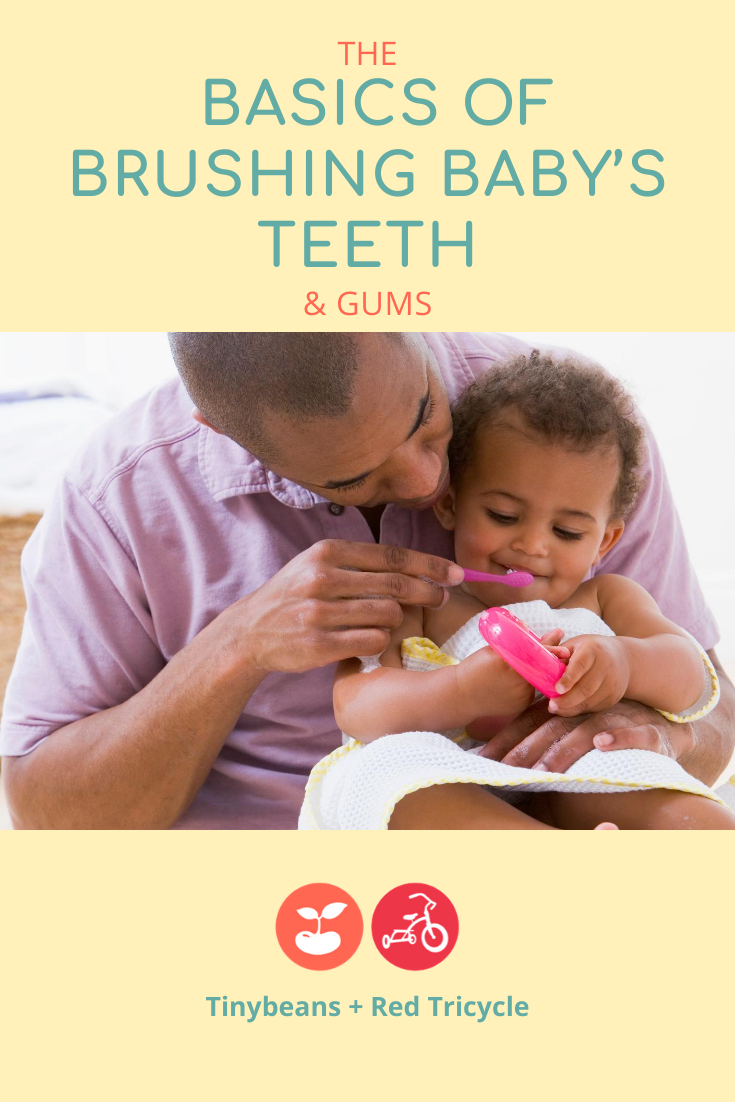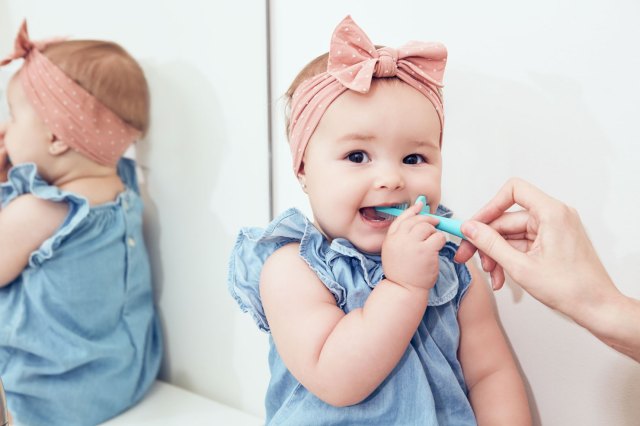Think it’s too early to brush baby’s teeth? Think again. Even before the first tooth breaks through, it’s a good idea to establish oral hygiene habits. If your little one is used to teeth-brushing as a part of the daily routine, you may have fewer battles later on. If you’re not sure when or how to get started, here are helpful tips on brushing your baby’s adorable little pearly whites.
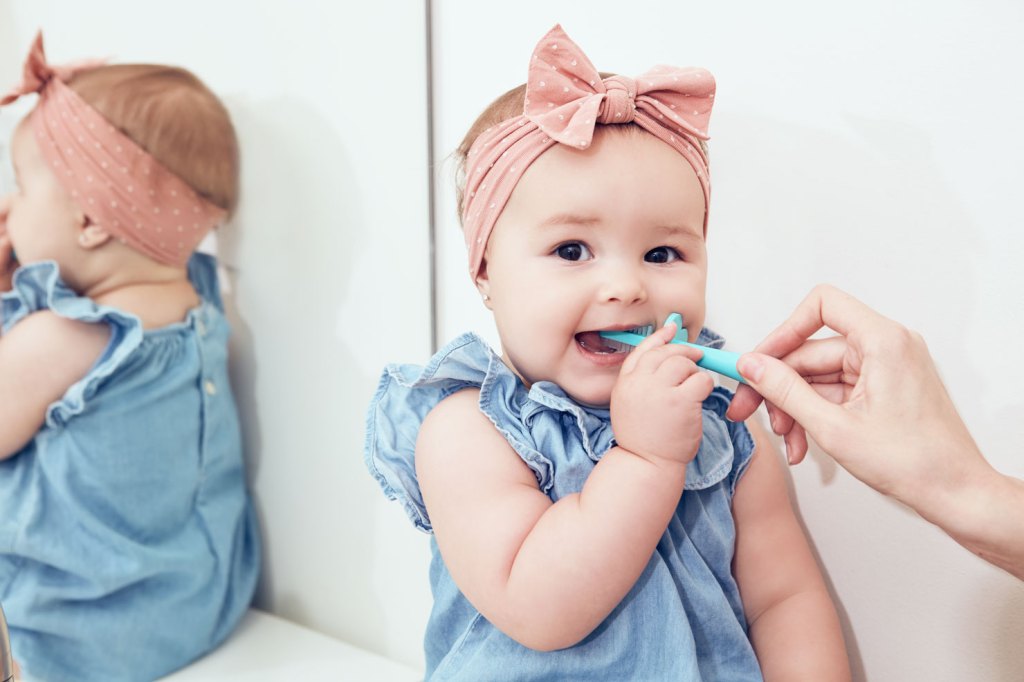
photo: grabease; the Double Sided Toothbrush
1. Start before baby’s teeth come in.
Keeping your baby’s mouth clean even before the first little tooth pops through is an important beginning step. Wiping gums after feedings will help to remove surface bacteria. To do this, wrap a clean, wet washcloth or a piece of clean gauze around your finger and wipe those toothless gums.
You can also try brushes designed for gums, like The RaZ-Berry Baby Toothbrush or the adorable finger-puppet brushes The Brushies.
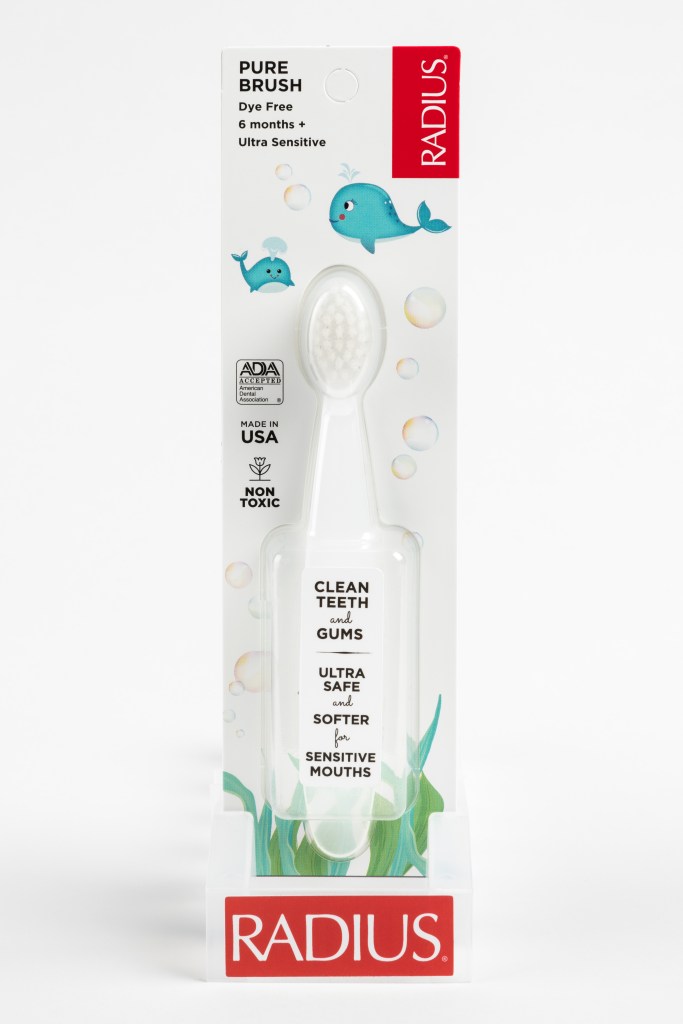
photo: RADIUS
2. Choose the right toothbrush.
Once babies have teeth, it’s time to introduce a toothbrush. You’ll want to look for one with soft bristles, a small head and a large handle that little hands can hold—and you’ll want to replace it every three months or so.
The Double Sided Toothbrush from grabease (pictured at top; for kids 6+ months) has a tapered brush head, a wide handle for little hands to grip, and bristles on two sides to make it easier and faster to get those teeth brushed. The handle sports a choke protection barrier for safety, so your little one can safely practice brushing.
The Pure Brush from RADIUS (pictured above; for kids 6-18 months) has a small, cornerless oval brush head that’s designed for babies’ mouths, with soft bristles. The handle is tapered to fit in baby’s hand, and the entire brush is free of BPAs, synthetic dyes and harmful chemicals.
3. Help them out.
Since baby’s fine motor skills aren’t fully developed yet, it’s best if you brush the teeth. Since that doesn’t always go as smoothly as we’d like, take a “Mommy’s (or Daddy’s) turn, and then your turn” approach. Continue to supervise the process until your child can rinse and spit without help.
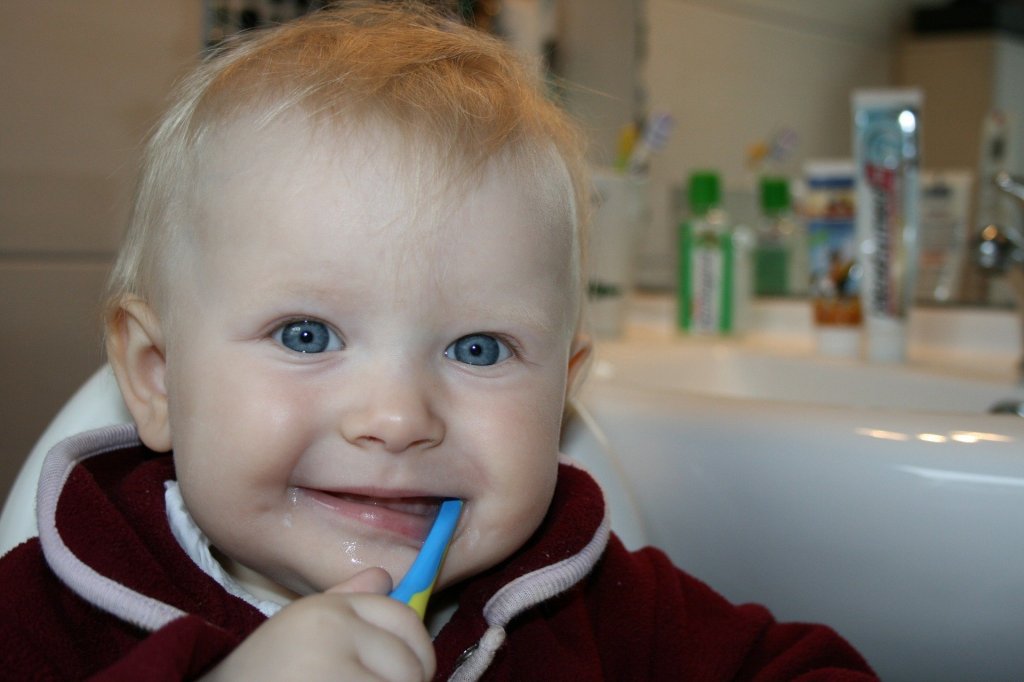
4. Talk to your dentist about toothpaste.
It’s a question many parents wonder about: Should I use a flouride or flouride-free toothpaste? The answer depends on many factors, including whether your water is flouridated, so your best bet is to ask your pediatric dentist. Whichever you choose, experts recommend brushing with toothpaste the size of a grain of rice.
5. Take your baby to the dentist.
The American Dental Association recommends that you take your baby to the dentist for their initial visit no later than their first birthday. However, you may want to ask your pediatrician’s opinion.
You can choose a pediatric dentist or kid-friendly family dentist to make the experience more comfortable for your little one. Some are equipped with TVs or colorful art and give kids treats. Since baby teeth are important because they hold the spot for permanent teeth, be sure to take care of them by scheduling regular visits.
—Heather Dixon & Eva Ingvarson Cerise
RELATED STORIES:
10 Bathtime Essentials for Baby
Top Teethers for Babies & Toddlers
